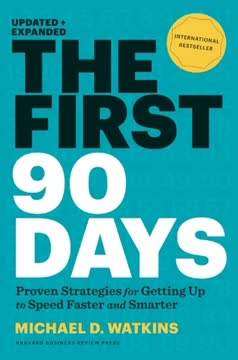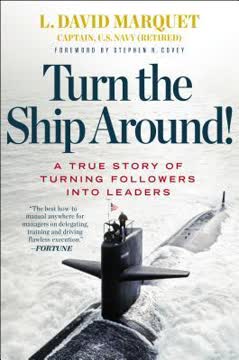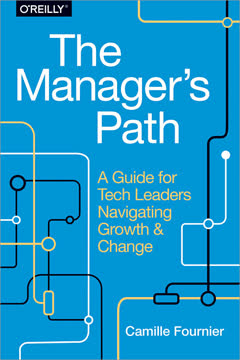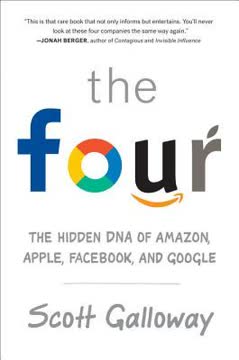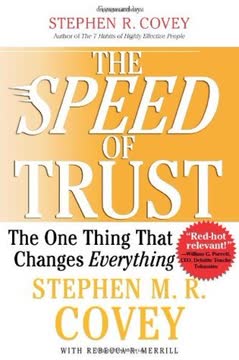가지 주요 요점
1. 정기적인 일대일 미팅을 통해 팀과 강한 관계를 구축하세요
"매니저 툴즈의 일대일 미팅은 '그냥 앉아서 이야기하는 시간'이나 '비공식적으로 서로를 알아가는 시간' 또는 '간단히 근황을 나누는 시간'이 아닙니다."
일대일 미팅의 목적: 이 미팅은 신뢰를 구축하고 성과를 향상시키기 위한 구조화된 비즈니스 중심의 대화입니다. 다음과 같은 방식으로 진행되어야 합니다:
- 매주 30분씩 일정 잡기
- 각 직속 보고자와 함께 진행
- 주로 직속 보고자의 안건에 집중
- 매니저가 메모를 기록
형식:
- 첫 10-15분: 직속 보고자가 이야기
- 다음 10-15분: 매니저가 이야기
- 마지막 5-10분 (시간이 허락한다면): 미래 계획이나 큰 그림 항목 논의
혜택:
- 향상된 의사소통과 신뢰
- 정기적인 피드백과 코칭 기회
- 주중 방해 요소 감소
- 팀원들의 강점과 도전 과제에 대한 더 나은 이해
2. 효과적인 피드백을 제공하여 미래 행동을 격려하세요
"성과 커뮤니케이션(따라서 피드백)의 목적은 효과적인 미래 행동을 격려하는 것입니다."
매니저 툴즈 피드백 모델:
- 피드백 제공 허락 요청
- 관찰된 행동 진술
- 행동의 영향 설명
- 효과적인 미래 행동을 격려하거나 감사 표현
핵심 원칙:
- 태도나 의도가 아닌 구체적이고 관찰 가능한 행동에 집중
- 시기적절하게 – 사건 후 가능한 빨리 피드백 제공
- 간결하게 – 피드백 인스턴스당 15-30초 목표
- 분노나 판단을 피하고 중립적인 톤 사용
예시:
- 긍정적: "신입 사원을 도우려고 늦게까지 남아주셔서 감사합니다. 훌륭한 팀워크를 보여주셨습니다."
- 건설적: "회의 중에 말을 끊으면 흐름이 방해됩니다. 다른 사람들이 끝까지 말할 수 있도록 노력해 주실 수 있나요?"
3. 팀원의 성과를 향상시키기 위해 코칭하세요
"코칭은 '관리 삼위일체'에서 가장 자주 사용되지 않는 도구입니다."
매니저 툴즈 코칭 모델:
- 목표 설정 협력 (DBQ 사용: 기한, 행동, 품질)
- 함께 자원 브레인스토밍
- 단기 행동 계획 수립
- 정기적으로 진행 상황 보고 및 지시
효과적인 코칭 실천:
- 향상시킬 특정 기술이나 행동에 집중
- 현실적인 기한을 가진 명확하고 측정 가능한 목표 설정
- 더 큰 목표를 작은 실행 가능한 단계로 나누기
- 일대일 미팅 중 정기적인 체크인과 피드백 제공
- 진행 상황과 도전에 따라 계획 조정
혜택:
- 향상된 개인 및 팀 성과
- 증가된 직원 참여와 동기 부여
- 조직 내 미래 리더 개발
4. 책임을 위임하여 팀과 자신을 발전시키세요
"위임을 배우는 것은 임원이 되는 과정의 일부입니다."
위임의 중요성:
- 매니저가 더 높은 수준의 책임에 집중할 수 있게 함
- 팀원의 기술과 자신감을 개발
- 매니저와 팀 모두의 미래 성장을 준비
효과적인 위임 전략:
- 작은 작업부터 시작하여 점차 책임 증가
- 명확한 지침과 기대 제공
- 필요한 지원과 자원 제공
- 진행 상황을 정기적으로 확인하고 피드백 제공
- 미세 관리나 위임된 작업을 되찾으려는 유혹을 저항
위임 도전 극복:
- 팀원의 능력을 신뢰
- 그들의 접근 방식이 다를 수 있음을 수용
- 실수를 학습 기회로 보기
- 단기 비효율성이 장기적인 이익으로 이어짐을 인식
5. 매니저로서 결과와 유지에 우선순위를 두세요
"효과적인 매니저의 정의는 결과를 얻고 사람들을 유지하는 사람입니다."
핵심 책임:
- 조직 목표와 목적 달성
- 재능 있는 팀원 유지
결과 달성 전략:
- 조직 우선순위에 맞춘 명확하고 측정 가능한 목표 설정
- 기대와 진행 상황을 정기적으로 소통
- 필요한 자원과 지원 제공
- 팀원이 약속을 지키도록 책임 부여
유지 향상 전략:
- 일대일 미팅을 통해 강한 관계 구축
- 성장과 개발 기회 제공
- 좋은 일을 인정하고 감사 표현
- 문제를 신속하고 공정하게 해결
- 긍정적인 팀 문화 조성
균형 잡기: 결과를 너무 강하게 추진하면 유지에 부정적인 영향을 미칠 수 있으며, 유지에만 집중하면 결과가 저하될 수 있습니다. 두 목표를 모두 달성할 수 있는 균형 잡힌 접근 방식을 추구하세요.
6. 성과 기대에 대해 명확하게 소통하세요
"당신의 첫 번째 책임은 조직이 기대하는 결과를 제공하는 것입니다."
명확한 기대 설정:
- 각 역할에 대한 주요 성과 지표(KPI) 식별
- 목표와 기준을 서면으로 소통
- 일대일 미팅과 팀 회의에서 기대 논의
- 성공의 구체적인 예시 제공
성과 모니터링 및 논의:
- 정기적인 체크인을 통해 진행 상황 평가
- 시기적절한 피드백 제공 (긍정적 및 건설적 모두)
- 성과 문제를 신속하게 해결
- 성공과 이정표 축하
문서화:
- 성과 논의에 대한 메모 유지
- 좋은 성과와 나쁜 성과의 구체적인 사례 문서화
- 공식 리뷰 및 개발 계획에 이러한 기록 사용
7. 일관되고 목적 있는 상호작용을 통해 신뢰를 구축하세요
"일반적으로 팀이 매니저를 더 신뢰할수록 결과가 더 좋아지고 유지도 더 잘됩니다."
신뢰 구축:
- 말과 행동의 일관성 유지
- 약속을 지키기
- 취약성을 보여주고 실수를 인정
- 팀원의 걱정과 아이디어를 적극적으로 경청
- 적절할 때 기밀 유지
신뢰 구축 기회:
- 일대일 미팅
- 팀 회의
- 비공식적인 상호작용
- 도전적인 상황이나 갈등
높은 신뢰의 혜택:
- 향상된 의사소통과 협업
- 위험을 감수하고 혁신하려는 의지 증가
- 높은 수준의 참여와 헌신
- 더 빠른 문제 해결 및 의사 결정
8. 최적의 영향을 위해 긍정적 피드백과 부정적 피드백의 균형을 맞추세요
"긍정적 피드백은 부정적 피드백보다 훨씬 더 강력한 도구입니다. 경력 내내 이를 깨닫지 못하지 마세요."
피드백 비율:
- 긍정적 피드백 대 부정적 피드백의 비율을 3:1 또는 4:1로 목표
- 긍정적 피드백을 제공할 기회를 적극적으로 찾기
긍정적 피드백 전략:
- 행동과 그 영향을 구체적으로 설명
- 행동을 조직 목표나 가치와 연결
- 긍정적 행동의 지속을 격려
건설적 피드백 전략:
- 사람보다는 행동에 집중
- 행동의 영향을 설명
- 개선을 위한 해결책을 함께 논의
- 변화를 보장하고 지원을 제공하기 위해 후속 조치
타이밍:
- 관찰된 행동 후 가능한 빨리 긍정적 및 부정적 피드백 제공
- 더 자세한 성과 논의를 위해 일대일 미팅 사용
9. 목표 설정과 코칭에 구조화된 접근 방식을 사용하세요
"매니저 툴즈는 코칭을 특정 기술 영역에서 직속 보고자의 성과를 향상시키기 위한 체계적인 노력으로 정의합니다."
DBQ 목표 설정 프레임워크:
- 기한: 목표는 언제 달성되어야 하나요?
- 행동: 어떤 특정 행동이나 기술이 개선되어야 하나요?
- 품질: 성공은 어떻게 측정될 것인가요?
예시: "3월 1일까지 (기한), 주간 운영 회의에서 다른 사람을 방해하지 않고 최소 다섯 번 (품질) 기여할 것입니다 (행동)."
코칭 과정:
- 개선할 기술이나 행동 식별
- DBQ를 사용하여 명확하고 측정 가능한 목표 설정
- 잠재적 자원과 전략 브레인스토밍
- 구체적인 작업이 포함된 단기 행동 계획 수립
- 진행 상황 모니터링 및 정기적인 피드백 제공
- 결과에 따라 계획 조정
성공의 열쇠:
- 더 큰 목표를 작은 실행 가능한 단계로 나누기
- 초기 작업에 대해 짧은 기한(1-3일)을 설정하여 모멘텀 구축
- 다양한 학습 방법 활용 (독서, 멘토링, 연습)
- 작은 승리와 진행 상황을 축하
10. 경력 발전에 따라 관리 스타일을 조정하세요
"마이크는 자신이 더 많은 일을 할 수 있었던 이유가 자신이 더 많은 일을 맡을 수 있도록 신뢰받았기 때문이라는 것을 깨달았습니다."
경력 발전 변화:
- 개인 기여자 → 매니저: 초점이 개인 성과에서 팀 성과로 이동
- 매니저 → 임원: 강조점이 전술적 사고에서 전략적 사고로 이동
주요 적응:
- 경력이 발전함에 따라 더 많은 책임 위임
- 팀원이 더 큰 역할을 맡도록 개발
- 조직 전반에 걸쳐 관계 구축
- 장기 계획과 큰 그림 사고에 집중
- 의사소통과 조정에 더 많은 시간 투자
극복해야 할 도전:
- 익숙한 작업을 놓아주는 것에 대한 저항
- 통제력이나 관련성을 잃는 것에 대한 두려움
- 중요한 책임을 다른 사람에게 맡기는 것의 어려움
성공 전략:
- 위임하고 다른 사람을 개발할 기회를 적극적으로 찾기
- 개인 성과보다는 팀의 성공을 축하
- 잠재력이 높은 팀원에게 멘토링과 코칭에 시간 투자
- 새로운 리더십 도전에 지속적으로 학습하고 적응
- 동료 지원 및 멘토링 네트워크 구축
마지막 업데이트 날짜:
FAQ
What's "The Effective Manager" by Mark Horstman about?
- Focus on People Management: The book is centered on managing people effectively, rather than focusing on broader organizational strategies like finance or change management.
- Actionable Guidance: It provides practical, step-by-step advice for managers to improve their skills in managing direct reports.
- Core Responsibilities: The book emphasizes achieving results and retaining employees as the primary responsibilities of a manager.
- Manager Tools Framework: It introduces the Manager Tools framework, which includes specific tools and behaviors to enhance managerial effectiveness.
Why should I read "The Effective Manager"?
- Practical Advice: The book offers actionable steps that managers can implement immediately to improve their effectiveness.
- Focus on Results and Retention: It provides a clear framework for achieving the dual goals of delivering results and retaining team members.
- Proven Methods: The guidance is based on data and extensive testing with thousands of managers, ensuring its reliability and effectiveness.
- Comprehensive Approach: It covers a wide range of managerial skills, from communication to delegation, making it a valuable resource for both new and experienced managers.
What are the key takeaways of "The Effective Manager"?
- Four Critical Behaviors: The book outlines four key behaviors for effective management: Get to Know Your People, Communicate about Performance, Ask for More, and Push Work Down.
- Manager Tools: It introduces specific tools like One On Ones, Feedback, Coaching, and Delegation to implement these behaviors.
- Focus on Relationships: Building strong relationships with direct reports is emphasized as a foundation for effective management.
- Sustainable and Teachable: The methods are designed to be teachable to others and sustainable over time, ensuring long-term success.
What is the Manager Tools Feedback Model?
- Four Steps: The model consists of four steps: Ask, State the Behavior, State the Impact, and Encourage Effective Future Behavior.
- Purpose: The goal is to encourage effective future behavior rather than focusing on past mistakes.
- Positive and Negative Feedback: The model is used for both positive and negative feedback, maintaining a consistent approach.
- Scripted Approach: It provides a scripted method to help managers deliver feedback effectively and consistently.
How do One On Ones work in "The Effective Manager"?
- Scheduled Meetings: One On Ones are scheduled, weekly 30-minute meetings with each direct report.
- Direct's Agenda First: The direct's issues are prioritized, with the manager taking notes to ensure follow-up.
- Builds Relationships: These meetings are designed to build trust and improve communication between managers and their teams.
- Proven Benefits: Regular One On Ones have been shown to improve both results and retention significantly.
What is the Delegation Cascade in "The Effective Manager"?
- Workload Management: The Delegation Cascade is a method for managing workload by delegating tasks down the organizational hierarchy.
- Delegating Small Tasks: Managers should delegate smaller tasks to their directs, rather than large responsibilities, to avoid overwhelming them.
- Organizational Growth: This approach supports organizational growth by allowing managers to focus on higher-level responsibilities.
- Cascading Effect: As tasks are delegated down, each level of the organization becomes more efficient and effective.
How does "The Effective Manager" define an effective manager?
- Results and Retention: An effective manager is defined as one who achieves results and retains their people.
- Focus on People: The book emphasizes the importance of managing people effectively to achieve these goals.
- Clear Responsibilities: Managers are responsible for delivering results and ensuring their team members are satisfied and engaged.
- Measurable Success: Success is measured by both the outcomes achieved and the retention of team members.
What are the Four Critical Behaviors in "The Effective Manager"?
- Get to Know Your People: Building strong relationships with direct reports is crucial for effective management.
- Communicate about Performance: Regular feedback and communication about performance are essential for improvement.
- Ask for More: Managers should continually encourage higher levels of performance from their team.
- Push Work Down: Delegating tasks effectively allows managers to focus on higher-level responsibilities.
How does "The Effective Manager" suggest handling resistance to One On Ones?
- Common Pushbacks: The book addresses common objections such as perceived micromanagement and lack of time.
- Role Power: Managers are encouraged to use their role power judiciously to insist on the importance of One On Ones.
- Building Trust: Overcoming resistance involves building trust and demonstrating the value of these meetings.
- Long-term Benefits: Emphasizing the long-term benefits of improved communication and relationships can help mitigate resistance.
What is the Coaching Model in "The Effective Manager"?
- Four Steps: The Coaching Model includes Collaborate to Set a Goal, Collaborate to Brainstorm Resources, Collaborate to Create a Plan, and The Direct Acts and Reports on the Plan.
- Collaborative Approach: The model emphasizes collaboration between the manager and the direct report throughout the process.
- Focus on Improvement: It is designed to help direct reports improve specific skills over a period of months.
- Short-term Tasks: The model uses short-term tasks and deadlines to drive behavior and ensure progress.
What are the best quotes from "The Effective Manager" and what do they mean?
- "Success at work is about what you do—you are your behaviors." This emphasizes the importance of actions over attitudes in achieving success.
- "The most important thing you can do as a manager is to develop a trusting relationship with the people on your team." This highlights the foundational role of trust in effective management.
- "If you implement Manager Tools One On Ones, we guarantee that you will get more time back in your calendar than you spend in having them." This underscores the efficiency and effectiveness of regular One On Ones.
- "Choose the harder right, instead of the easier wrong." This encourages managers to make ethical and challenging decisions for the benefit of their team and organization.
How does "The Effective Manager" address the issue of favoritism?
- Equal Treatment: The book emphasizes the importance of treating all directs equally, especially in the context of One On Ones.
- Friendly, Not Friends: Managers are advised to be friendly with their directs but not to form friendships that could lead to perceived favoritism.
- Professional Boundaries: Maintaining professional boundaries helps ensure that all team members feel valued and fairly treated.
- Focus on Performance: Decisions and interactions should be based on performance and professional criteria, not personal relationships.
리뷰
효과적인 관리자는 실용적이고 데이터 기반의 관리 접근 방식으로 주로 긍정적인 평가를 받는다. 독자들은 이 책이 강조하는 네 가지 주요 행동, 즉 일대일 대화, 피드백, 코칭, 위임에 집중하는 점을 높이 평가한다. 이 책은 특히 신임 관리자들에게 유용한 직설적인 조언과 실행 가능한 전략으로 찬사를 받는다. 일부는 반복적인 스타일과 원격 근무에 대한 구식 견해를 비판하기도 한다. 전반적으로, 필수적인 관리 기술을 배우는 데 유용한 자원으로 간주되지만, 더 포괄적인 이해를 위해 다른 리더십 책과 함께 보완할 것을 제안하는 사람들도 있다.
Similar Books

